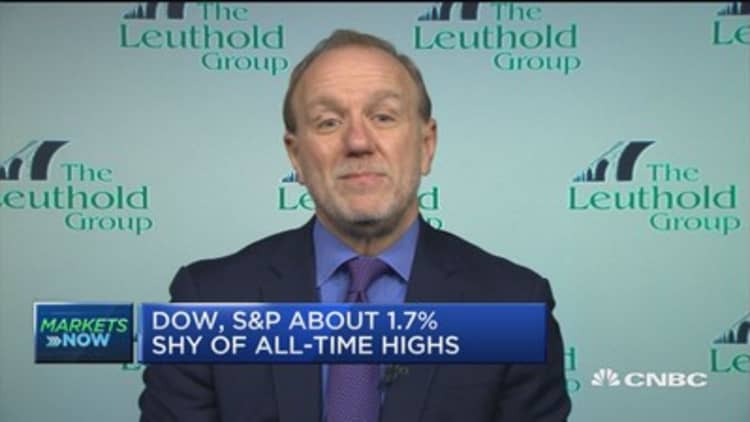
Closely followed strategist Jim Paulsen sees the possibility of a 15 percent correction in the stock market, which just logged its best January since the 1990s.
Market sentiment is too bullish, and stocks are "significantly overvalued," the chief investment strategist at Leuthold Group told CNBC on Thursday.
A market correction is defined as a decline of at least 10 percent from recent highs. The threshold for a bear market is a slide of at least 20 percent. So Paulsen's worst-case-scenario splits the difference.
Paulsen also sees the Federal Reserve increasing interest rates four times this year, with wage inflation picking up.
On Wednesday, Fed officials held rates steady after their two-day meeting, the last one for Janet Yellen as Fed chair. According to projections released after their December meeting, central bankers expect three rate hikes in 2018.
"Challenges are mounting here for stocks," Paulsen told "Squawk Box." "And for bonds, I think."
"The values have been high. They still are. You're losing the element of surprise. You know, these economic and earnings reports are fabulous, but we know they're fabulous," he added. "It just has never felt this bullish."
At some point, the economic and earnings numbers won't have the same impact on the market they had previously, Paulsen argued. He sees commodities outperforming stocks and bonds this year.
The Dow Jones industrial average and just registered their best January performances since 1994 and 1997, respectively. The markets did suffer a pretty significant two-session loss on Monday and Tuesday and some ups and downs since then. U.S. stocks opened lower on Wall Street Thursday.


